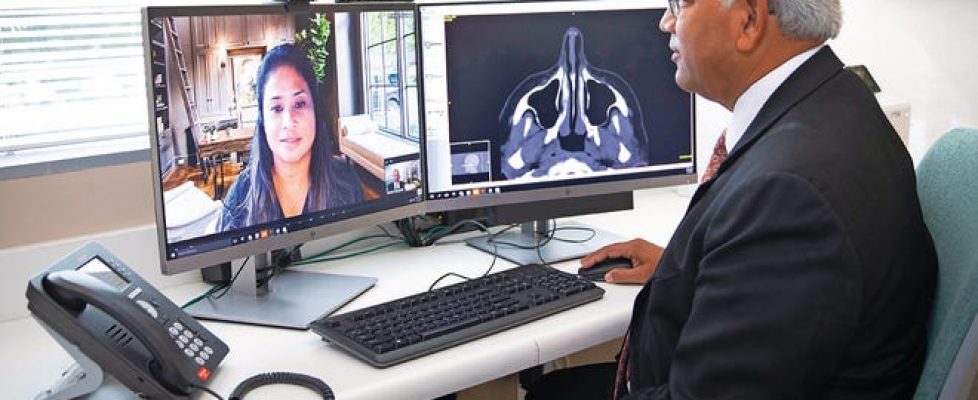During COVID-19, many doctors and patients are using telehealth to keep connected
In 2019, Mayo Clinic’s campus in Florida was ramping up its virtual options for patients, and providers conducted about 100 appointments by video throughout the year. This spring, with people staying home as a result of the COVID-19 pandemic, the clinic was performing about 600 virtual patient visits per day.
“I think that’s been a real advantage of the pandemic — it’s really allowed us to utilize telemedicine to benefit both patients and clinicians,” says Dr. Sarvam TerKonda, a plastic surgeon and a medical director for Mayo Clinic Center for Connected Care.
And Mayo Clinic patients have embraced the change and are pleased with the process: Surveys are showing that 95 percent to 98 percent of patients rate the video appointments as a positive experience, TerKonda says.
During the pandemic, doctors in many parts of the country have connected with their patients online instead of in person for everyone’s safety. Patients who had adapted to connecting to family and friends via video smoothly transitioned to seeing their physicians that way too, minimizing a lot of potential technical difficulties. And this situational advance of telemedicine has left many doctors and patients hoping it will continue to be an option even when life returns to “normal.”
While some diagnoses require a physical exam, such as listening to the heart or touching a mass, TerKonda says there are many appointments where virtual visits work just as well. For TerKonda, those include pre-op and post-op appointments with his patients. The technology has also helped minimize contact with patients of Mayo Clinic who have COVID-like symptoms.
Dr. Eric Singman, a neuro-ophthalmologist and medical director for clinical operations at Johns Hopkins Hospital in Baltimore, agrees that with a good camera and internet connection, real-time videoconferencing is a great option for some routine consultations, dermatology and radiology appointments and other practices.
He’s also excited that telemedicine may offer patients more quality time with physicians.
“In a sense, it’s turned the clock backwards, in that it starts to develop the physician-patient relationship that we were taught were the ‘good old days,’ when a doctor was someone who knew his patients and the patients knew him. Telemedicine allows that relationship,” Singman says. “This is your real golden opportunity to ask your doctor questions. Your doctor is hopefully not going to be distracted with looking at and checking your blood pressure or checking your pulse or listening to your lungs … which means you have his ears probably better than you’ve ever had his ears before.”
With some restrictions temporarily loosened to allow doctors to bill for online appointments in more cases as well as to practice across state lines, patients have been able to safely get the information they need while quickly receiving answers to questions that may have taken more time if they had to go into the doctor’s office, Singman says.
If virtual appointments are still widely available post-pandemic, Singman feels it might free up doctors’ schedules as well as exam rooms that are needed for more in-depth or physical exams.
The time saved from traveling to the office and sitting in the waiting room has been convenient for patients, too.
“I really liked how easy it was to connect and speak with the doctor, and I can actually make … same-day appointments with my own doctor,” says Kathia Kortanek of Reston, Va. “I really didn’t need to be at the doctor’s office, and it saved me lots of time. Even if the doctor was running late, I was home and could do other things while waiting.”
Based on her positive experiences, Kortanek says she would love to have the chance to continue with virtual appointments in the future.
“Telemedicine has gotten a tremendous boost because of the COVID situation. And it’d be a real shame to go backwards,” Singman says. “If the main goal is good patient care and good patient access to care, then I think that telemedicine is an answer to that.”

